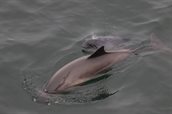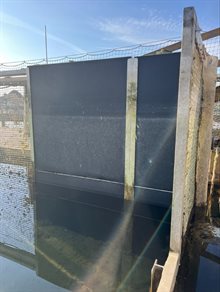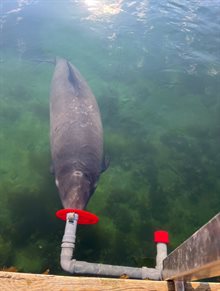Vibro piling effects on harbour porpoises
In 2025 Wozep started a project to investigate the effects of vibro piling sounds on harbour porpoises, the most abundant small cetacean of the North Sea.
The aim of this project is to determine sound thresholds where different effects like PTS (Permanent Threshold Shift), TTS (Temporary Threshold Shift) and disturbance occurs. These thresholds can then be used to calculate the impact of vibro piling on the harbour porpoise population in future Framework for Assessing Ecological and Cumulative Effects (KEC, in Dutch ‘Kader Ecologie en Cumulatie’).
Vibro piling versus regular piling
Vibratory hammers used in vibro piling function differently from ordinary impact pile drivers. Instead of hard blows at intervals, the piles are struck with less force where intervals are much shorter or even absent. The piles can be said to be vibrated into the ground. A vibratory hammer strikes with less energy so the sound produced by striking a pile is also less loud and the frequency composition is different to that of regular piling. As a result, the effects on the hearing, behaviour and health of porpoises and other marine mammals may also be different from traditional pile drivers. Until now, the main focus has been on the disturbance caused by pile driving noise, this disturbance-unit is the unit the Dutch government uses to determine the impact on the population of the harbour porpoise employing the model iPCoD. However, for noise of a different nature, like vibro piling, the type and magnitude of the effects are largely unknown. It is therefore important to determine the behavioural threshold (disturbance threshold) and the hearing thresholds (TTS & PTS) for this new sound source.
Cooperation
The research will be done by the Marine Biological Research Center at University of Southern Denmark, located adjacent to the Danish Fjord&Baelt Centre keeping harbour porpoises.
This project is contracted to the University of Southern Denmark (USD) and Fjord&Baelt Centre Kerteminde Denmark. An advisory board with experts from the US National Marine Mammal Foundation and Aarhus University will provide scientific quality control throughout the project. It is commissioned by the Rijkswaterstaat Offshore Ecological Research Programme (Wozep) on behalf of the Ministry of Climate Policy and Green Growth (KGG).
More information
See for more information the website of the Marine Biological Research Centre or Fjord&Baelt.
Please contact the Wozep team if you have additional questions by filling out this form.
Harbour porpoises Foto: Ruben Fijn
Black soundproofing shields of the pool in Kerteminde, Denmark, to use for TTS and psychophys
Harbour porpoise on the psychophysics station answering to a classical Go/No-Go paradigm; if the animal hears a sound it goes to the red target (ball) on the right, if it does not hear the sound the animal stays on station on the left.


